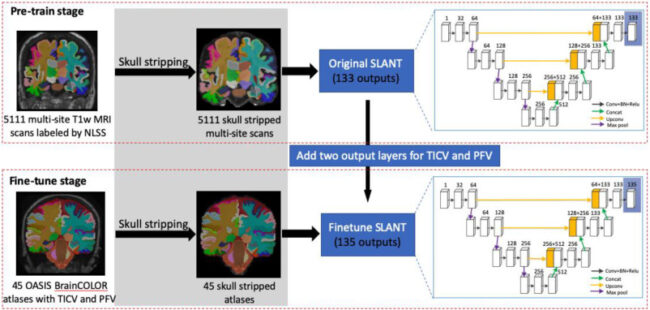Generalizing deep learning brain segmentation for skull removal and intracranial measurements
Yue Liu, Yuankai Huo, Blake Dewey, Ying Wei, Ilwoo Lyu, Bennett A. Landman ,“Generalizing deep learning brain segmentation for skull removal and intracranial measurements.”Magnetic Resonance Imaging. Volume 88, May 2022, Pages 44-52
Abstract
Total intracranial volume (TICV) and posterior fossa volume (PFV) are essential covariates for brain volumetric analyses with structural magnetic resonanceimaging (MRI). Detailed whole brain segmentation provides a non-invasive way to measure brain regions. Furthermore, increasing neuroimaging data are distributed in a skull-stripped manner for privacy protection. Therefore, generalizing deep learning brain segmentation for skull removal and intracranial measurements is an appealing task. However, data availability is challenging due to a limited set of manually traced atlases with whole brain and TICV/PFV labels. In this paper, we employ U-Net tiles to achieve automatic TICV estimation and whole brain segmentation simultaneously on brains w/and w/o the skull. To overcome the scarcity of manually traced whole brain volumes, a transfer learning method is introduced to estimate additional TICV and PFV labels during whole brain segmentation in T1-weighted MRI. Specifically, U-Net tiles are first pre-trained using large-scale BrainCOLOR atlases without TICV and PFV labels, which are created by multi-atlas segmentation. Then the pre-trained models are refined by training the additional TICV and PFV labels using limited BrainCOLOR atlases. We also extend our method to handle skull-stripped brain MR images. From the results, our method provides promising whole brain segmentation and volume estimation results for both brains w/and w/o skull in terms of mean Dice similarity coefficients and mean surface distance and absolute volume similarity. This method has been made available in open source (https://github.com/MASILab/SLANTbrainSeg_skullstripped).
